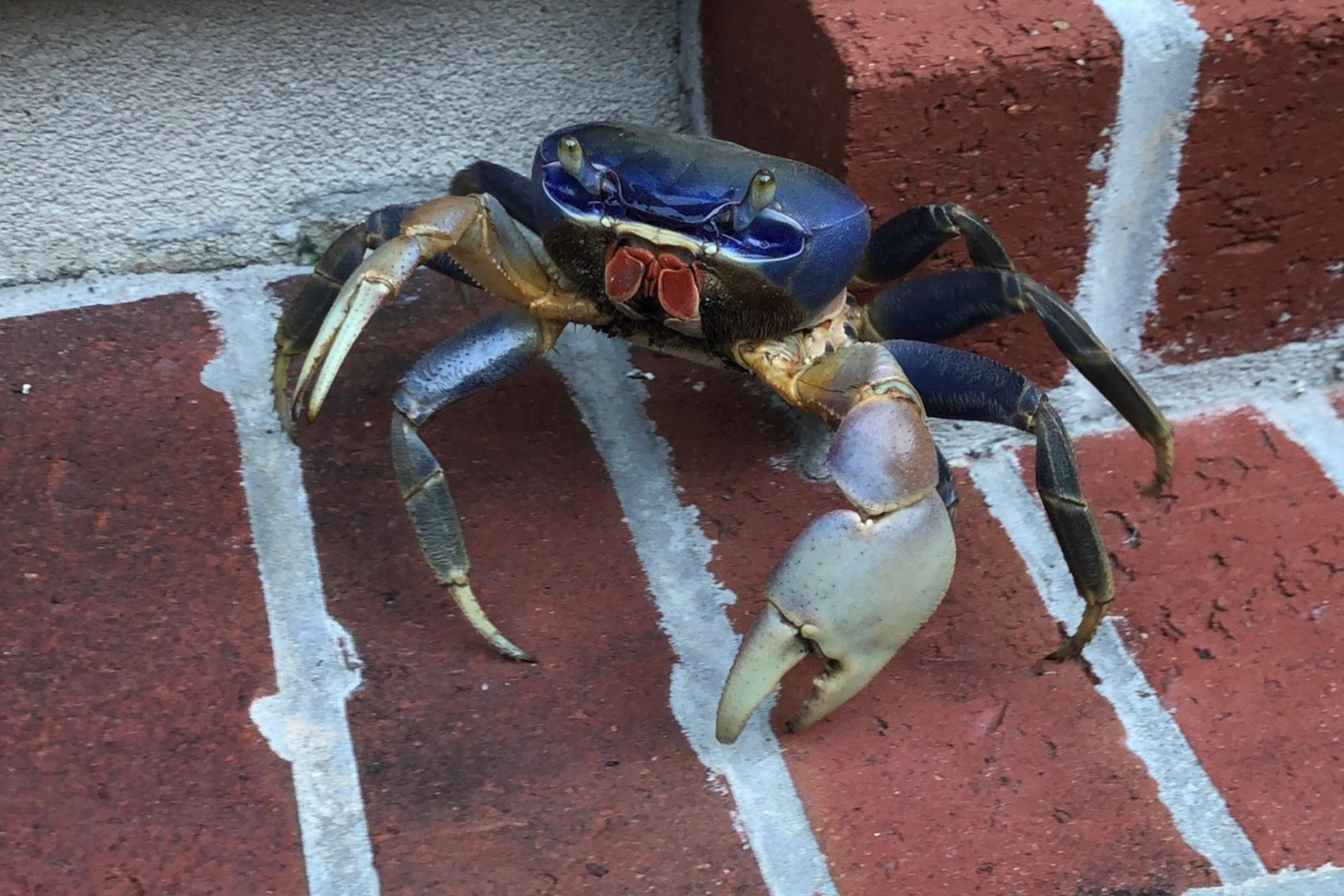Section Branding
Header Content
Spot a blue land crab in Georgia? The Department of Natural Resources needs your photos
Primary Content
Don't be fooled by the beguiling jewel tones of the blue land crab. Cardisoma guanhum is commercialized in Brazil but is now expanding in parts of the U.S., including Coastal Georgia.
The non-native species may pose limited health risks to humans but as its level of invasiveness is being determined, the WRD is keeping an eye on the crabs' habits.
“While we are uncertain about the potential ecological and economic risks these crabs pose, we are currently concerned about damage caused by their extensive burrowing,” said Jim Page, WRD Aquatic Nuisance Species Program manager, in a statement on Dec. 20, 2024. “As a new non-native species in our state, we need more information about these crabs and are asking for the public’s help.”
The WRD said the crabs may look like fiddler crabs — and not all of them are blue. "Adult males more often have the blue coloring, but females can be white or gray, and when younger, their colors can be even more varied."
The crabs dig deep burrows and become visible when rain brings them out of the holes.
The public is encouraged to take photos and report sightings of blue land crabs here.
Have other questions about blue land crabs? Contact a local Georgia WRD office.


